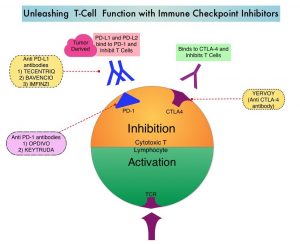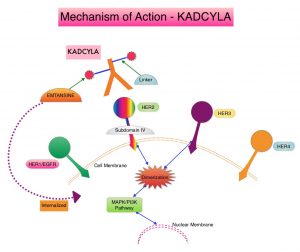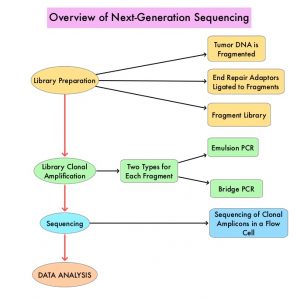SUMMARY: Colorectal Cancer (CRC) is the third most common cancer diagnosed in both men and women in the United States. The American Cancer Society estimates that approximately 147,950 new cases of CRC will be diagnosed in the United States in 2020 and about 53,200 patients are expected to die of the disease. The lifetime risk of developing CRC is about 1 in 23. Approximately 15-25% of the patients with CRC present with metastatic disease at the time of diagnosis (synchronous metastases) and 50-60% of the patients with CRC will develop metastatic disease during the course of their illness. Patients with metastatic CRC, whose disease has progressed after treatment with standard therapies, have limited therapeutic options available, to treat their disease.
In the TRIBE trial, the triplet combination FOLFOXIRI (Fluorouracil, Leucovorin, Oxaliplatin, and Irinotecan) plus Bevacizumab significantly improved Progression Free Survival compared with the doublet combination FOLFIRI (Fluorouracil, Leucovorin and Irinotecan) plus Bevacizumab in patients with metastatic colorectal cancer. However, the actual benefit of first line treatment with three cytotoxic drugs compared with a preplanned sequential strategy of using doublet therapy, as well as the feasibility or efficacy of these therapies after disease progression has remained unclear. The authors in this study aimed to compare a preplanned strategy of upfront FOLFOXIRI followed by the reintroduction of the same regimen after disease progression versus a sequence of mFOLFOX6 and FOLFIRI doublets, in combination with Bevacizumab. It should be noted that FOLFOXIRI regimen is not FOLFIRINOX. FOLFOXIRI regimen does not require a bolus infusion of Fluorouracil, involves a different infusional dose and schedule, and includes Irinotecan and Leucovorin at lower doses than does FOLFIRINOX.
TRIBE2 is an open-label, randomized, multicenter, Phase III study in which first line FOLFOXIRI followed by reintroduction of the same regimen after disease progression, was compared with a sequence of mFOLFOX6 (Fluorouracil, Leucovorin, and Oxaliplatin) and FOLFIRI (Fluorouracil, Leucovorin, and Irinotecan) doublets, in combination with Bevacizumab, in patients with unresectable, previously untreated metastatic colorectal cancer. A total of 679 patients were randomly assigned 1:1 to the control group (N=340) or experimental group (N=339). Patients in the control group received first-line mFOLFOX6 (Oxaliplatin 85 mg/m2 IV along with Leucovorin 200 mg/m2 IV over 120 min, Fluorouracil 400 mg/m2 IV bolus, followed by Fluorouracil 2400 mg/m2 continuous infusion over 48 hours) plus Bevacizumab 5 mg/kg IV over 30 min starting on day 1. Patients in the experimental group received FOLFOXIRI (Irinotecan 165 mg/m2 IV over 60 min, Oxaliplatin 85 mg/m2 IV along with Leucovorin 200 mg/m2 IV over 120 min, Fluorouracil 3200 mg/m2 continuous infusion over 48 hours) plus Bevacizumab 5 mg/kg IV over 30 min starting on day 1. Treatment was repeated every 14 days for up to 8 cycles. Patients then received maintenance treatment with Fluorouracil and Leucovorin along with Bevacizumab every 14 days until disease progression. After disease progression on maintenance treatment, patients in the control group received FOLFIRI (Irinotecan 180 mg/m2 IV along with Leucovorin 200 mg/m2 IV over 120 min, Fluorouracil 400 mg/m2 IV bolus, followed by Fluorouracil 2400 mg/m2 continuous infusion over 48 hours) plus Bevacizumab 5 mg/kg IV over 30 min starting on day 1 every 2 weeks for 8 cycles. This was followed by Fluorouracil and Leucovorin along with Bevacizumab maintenance. After disease progression on maintenance treatment in the experimental group, FOLFOXIRI was reintroduced for up to 8 cycles, followed by Fluorouracil and Leucovorin along with Bevacizumab maintenance. Patient demographics, clinical and molecular baseline characteristics, were well balanced in both treatment groups. The Primary endpoint was Progression Free Survival 2 (PFS2), defined as the time from randomization to disease progression on any treatment given after first disease progression.
At a median follow up of 35.9 months, the median PFS2 19.2 months in the experimental group versus 16.4 months in the control group (HR=0.74; P=0.0005). The median PFS1 was 12 months versus 9.8 months respectively (HR=0.74, P=0.0002). The Objective Response Rate (ORR) to first line treatment was 62% in the experimental group versus 50% in the control group (P=0.0023). The median Overall Survival was 27.4 months in the experimental group versus 22.5 months in the control group (HR=0.82; P=0.032). The most common Grade 3 or 4 adverse events during first-line treatment in the experimental group were diarrhea and neutropenia. Serious adverse events occurred in 25% of patients in the experimental group versus 17% of patients in the control group. After first disease progression, there were no significant differences in frequency of Grade 3 or 4 adverse events between the control and experimental groups, except for a higher incidence of neurotoxicity in the experimental group (5% versus 0%).
It was concluded that first line treatment with FOLFOXIRI plus Bevacizumab followed by the reintroduction of the same regimen after disease progression is the best first-line treatment option for select group of patients with metastatic colorectal cancer, compared to sequential administration of chemotherapy doublets, in combination with Bevacizumab.
Upfront FOLFOXIRI plus bevacizumab and reintroduction after progression versus mFOLFOX6 plus bevacizumab followed by FOLFIRI plus bevacizumab in the treatment of patients with metastatic colorectal cancer (TRIBE2): a multicentre, open-label, phase 3, randomised, controlled trial. Cremolini C, Antoniotti C, Rossini D, et al. Lancet Oncol 2020;21:497-505




